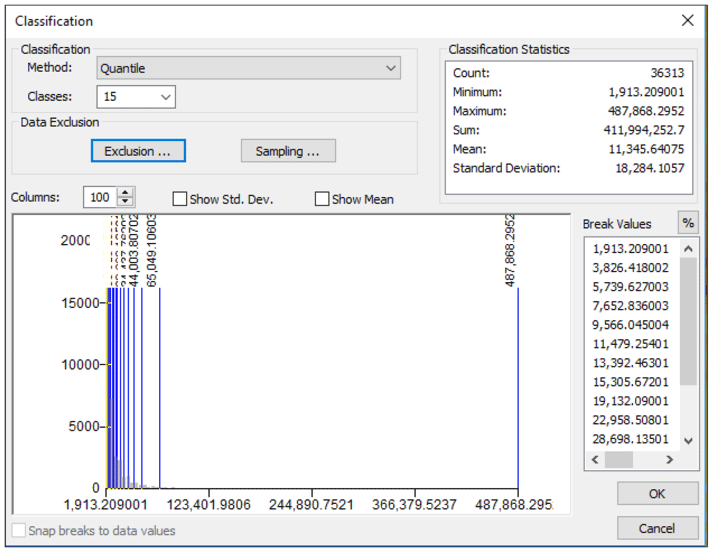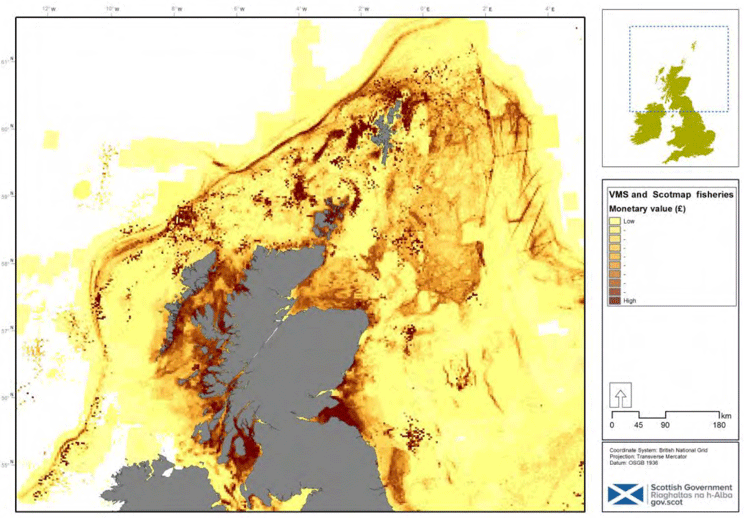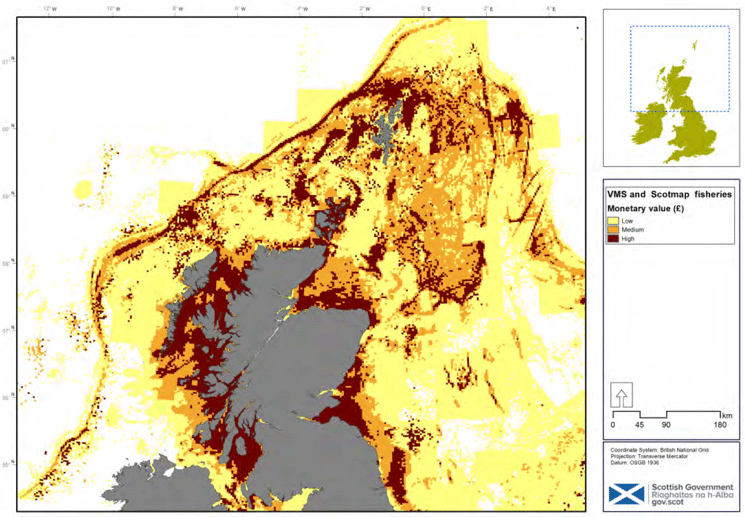Search areas for offshore wind energy: scoping study
Scoping study about identifying areas of search to potentially be developed into draft plan options for offshore wind energy in Scottish waters.
8. Technical Annex
8.1 GIS Processing
The ESRI ArcGIS suite of products was the sole mapping software used for this analysis. ESRI's ArcMap version 10.4.1 and ArcGIS Pro 2.1.1 were the two GIS platforms where the analysis and data processing were completed.
All layers were converted to rasters if not already in that format. A raster is a geo-referenced grid of values. Once all the rasters are standardised they can be added together to generate a cumulative output. Furthermore, each layer's relative level of influence, or weighting, can be chosen within each run of the overlaying tool. The GIS tool used to overlay and weight the layers is the Weighted Sum tool from the Spatial Analyst extension toolbox.
The Spatial Analyst extension was essential for all of the raster based processing tasks. This extension enhances the functionality of the basic ArcGIS platform to allow additional raster processing tools to be included in the analysis. These additional tools allow extraction of specific shapes, raster projection, conversion of vector data to raster format and raster overlay. The overlaying tools only accept raster format so this added functionality is essential.
All the layers can be processed in a standard manner by setting the ArcGIS geo-processing environment at the top hierarchy level to deal with all the layers using the same cell size, extent, coordinate reference system and location. It is important to apply the snap raster function to a known layer, in this case the Scottish EEZ, to ensure that all the layers used occupy exactly the same processing space.
The layer grid size to which all layers were standardised was 180 m 2. The bathymetry layer as provided by Ocean Wise which has a resolution of 0.0016680567 of 1 degree was the layer that was used as a grid size template and carried over to all of the layers used in this study.
All layers were projected to the WGS84 coordinate reference system and masked to the Scottish renewables EEZ during processing.
8.2 Data classification approach
Each data layer had to be considered individually as the values and value distributions were not consistent for all layers. In most cases the statistical capabilities of ArcGIS were used to identify the most appropriate points to use as a cut-off for the reclassification. Some data are categorical like the sediment classification layer or the cod spawning layer.
As an example of the classification into three classes the fishing layer composed of the VMS and ScotMap fishery values is described. First, the 'Quantile' classification system was applied to the data. The zero values were then excluded and the number of classes put to 3. This automatically calculated subdivision was considered an appropriate representation of the range of values in this layer. The values themselves have a skewed distribution towards the lower values. Figure 36 shows the classification process as applied using the ArcGIS layer classification interface.
Figure 36: Reclassification of the fishing layer by using the 'Quantile' classification method.

This selection process converts a layer with a large range of data values into one with 3 groups. Figures 37 and 38 show the original layer and the reclassified version.
Figure 37: Fishing value layer pre-reclassification showing the range of values described by a range of colour hues. © Crown copyright and database rights (2018) OS (100024655).

Figure 38: Fishing layer after reclassification into three classes. © Crown copyright and database rights (2018) OS (100024655).

Contact
There is a problem
Thanks for your feedback